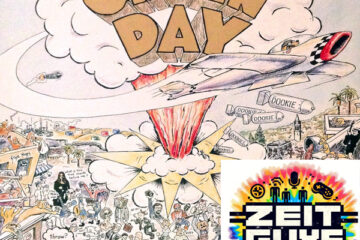When Pocahontas was put out, with a Native American consultant with fake credentials, Disney decided to age up and sexualize the 10 year old girl to make the historically platonic if not paternal relationship into a romance with (the at-the-time not problematic) heart throb Mel Gibson. Let see what the students had to say:
“Colors of the Wind“ by Haddon Buschmann
“Colors of the Wind” is a song written by Alan Menkan and Stephen Schwartz and Sung by Judy Kuhn in 1995 for the Disney movie, Pocahontas. The song speaks from the perspective of a Native American named Pocahontas to an English colonist named John Smith. The lyrics talk about the relationship mankind should have with nature, and that the earth is a beautiful place that must be shielded from the wrath of humans. Pocahontas tells Smith to spend time with nature and appreciate the beauty of it instead of tearing it down for riches and gold.
In the beginning of the song, Pocahontas shoves a gun into Smith’s hands while asking “if the savage one is [her].” The imagery implies that the Englishmen are the violent and savage ones because of their need to kill and destroy everything in their path. Pocahontas asks how high the trees will grow, but tells Smith that “if you cut it down, then you’ll never know.” The quote explains that if the colonists destroy all the land and earth, then they will never see how much beauty it contains and how much nature could thrive. When she sings, “Can you paint with all the colors of the wind,” she asks if John Smith can see the entire picture, even deeper than what
he can see with his bare eyes, because wind does not actually have color. At the end of the song, it states, “You can own the earth and still all you’ll own is earth until you can paint with all the colors of the wind.” Pocahontas tries to say that even if he owns the earth, if he does not see the whole beauty and bigger picture, then all that is going to remain is dirt and bareness.
The film shows Pocahontas as a simplistic, free, vibrant figure who is very wise about the earth. However, the film portrays Smith as a violent, ignorant man who needs to be informed about the earth. The film also follows a love story between Pocahontas and John Smith, when in reality, she was 16 when they met while he was a grown adult. The change in their dynamic demonstrates how culture has affected the retelling of history. Disney made the story into a love story since they thought it would be more popular with the audience and sell more copies. (395)
“Colors of the Wind“ by Faiza Khaled
In 1995, a song called “Colors of the Wind ” came out with the famous movie Pocahontas. The movie tells the story of a Powhatan woman named Pocahontas who is the daughter of an Algonquin chief. English colonists arrive from the Virginia Company, where Pocahontas meets and falls in love with John Smith. She struggles choosing between her own people and her true love since there is a large disconnect between the English and Native Americans. The song “Colors of the Wind,” is sung by Pocahontas to John Smith to explain to him the beauty of nature and her viewpoint of the world.
The lyrics explore the roots of indigenous people and their perspective. The song talks about the beauty of nature and humanizes things like trees and animals. She sings about how the Americans think that “the only people who are people are the people who look and think like [them].” She tries to widen John Smith’s perspective about life and get him to acknowledge everything that they take for granted. She also continues to sing “how high does the Sycamore grow? If you cut it down you’ll never know.” She stresses the importance of nature preservation instead of seizing land for profit. Through these lyrics, she expresses the lost potential from the Indigenous people and their homeland.
Pocahontas sings through personification and use of metaphors to illuminate earth as an entity that needs protection from mankind. She sings about all the unknown wonders that the English unknowingly destroys. The colonizer viewed Earth merely as “ just a dead thing [they] can claim.” The English lacked a deeper understanding of what nature entitles, which is something that the Native Americans take major cognizance of. The song, “Colors of the Wind,” was an attempt to help the colonizers to further understand the Native perspective.
“Colors of the Wind” by Riley Reynolds
Colors of the Wind portrays the perspective of both the English and Native Americans. Disney released the movie Pocahontas in the year of 1995. Our history and Disney’s version of Pocahontas and John Smith are displayed differently. Pocahontas made by Disney is a love story while in real life, the story was more than what it was. Looking at the lyrics of the song can interpret the perspectives of each side but it has some negative and positive aspects to it.
The Native Americans had already inhabited the land of Jamestown in the 1600s when the Europeans sailed to the New World thinking they discovered the land in the first place. They wanted to conquer the land of the Powhatans but they saw that as a threat at first. In the song, it says “You think the only people who are people. Are the people who look and think like you” this truly represents a depiction of anticolonialism in Europe. A true European to them was someone with blonde hair and blue eyes so when the Europeans saw the Native Americans, they immediately called them savages for having a darker skin color. To be seen as inferior to each other because of skin color and appearance.
An important theme shown throughout the song is the idea of “Us vs. Them”. It contrasted the morals of the Indians since they lived in the land longer, meaning they saw the beauty in it. Compared to the European perspective which is to conquer the land just to take control of it. “Come roll in all the riches all around you” meaning the Indians knew more about the lay of the land and the beauties tied with it. Pocahontas accuses John Smith of tunnel vision, implying there is a bigger picture beyond what he sees. While the morals of the Europeans were to be explorers, and finding as many riches as they can to sustain themselves. Hardly examining the bigger picture the Indians saw.
In conclusion, both sides portrayed different points of view based on their morals and interpretations of each other. Even though the Europeans and Indians did not trust each other at first, trust came in the end. Disney’s version of history shows Pocahontas and John Smith falling in love with her, showing him the Indians have no reason to be seen as inferior or savage. Our history mentions John Smith and Pocahontas had no romantic relation, but she helped contribute peace to both sides. Pocahontas believed John deserves to be a warrior of the Powhatan tribe based on the test of strength later the Europeans and Powhatans lived in peace.
“Colors of the Wind” by Judson DiVenere
“Colors of the Wind,” is a song featured in the Disney movie, Pocahontas, sung by Pocahontas. In real life, Pocahontas was a Native American woman who belonged to the Powhatan tribe. She was a translator between the English settlers of Jamestown and her tribe and helped broker a peace settlement between them.
In Pocahontas, she sang “Colors of the Wind” with John Smith, an English soldier who lived in Jamestown. “Colors of the Wind” is about the Puritans’ view of the Native Americans. THEME ALERT WHOOP WHOOP. The Native Americans were “savages” according to the morals of the Puritans. Pocahontas sings about settlers thinking they own whatever land they are on, which shows her anti-colonial mindset. She also sings about how the only people the English think are people are the ones that walk and talk like them (white and English-speaking), which demonstrates their belief that the Native Americans were not people. That is just like the view white slave owners had of African slaves. From the movie scene itself when “Colors of the Wind” was sung, it was all outside; running through the forest and swimming with animals who were Pocahontas’ friends. Pocahontas said, “The rainstorm and the river are my brothers/The heron and the otter are my friends.” This displays Native Americans’ ties to nature by befriending animals and singing with the voices of the mountains.
Like the song and movie, elementary school oversimplified history in order to keep our attention. In my 4th grade Social Studies class, I learned the rain dance, created by the Cherokee tribe to summon spirits of the gods and purify the Earth with rain. Disney and elementary school continued with the narrative of oversimplified school and Disney also went with very stereotypical representations of historical cultures or figures, like Pocahontas. The line, “But if you walk the footsteps of a stranger/You’ll learn things you never knew”, could have been a reference to the first Thanksgiving when the Pilgrims and Native Americans walked in the footsteps of a stranger. They also learned new things that they never knew before; like how to travel by water.
“Colors of the Wind” Song Analysis by Annalisa Dagnino
“Colors of the Wind” was used in the Disney movie Pocahontas to illustrate a romanticized version of history. This song is used to depict the story of English settlers coming to the new world and their introduction to the Native Americans. Oftentimes, these Natives were treated poorly as their land was taken away from them and misused. The Amerindians were seen as “savage” because of the different characteristics they held from the English settlers. Pocahontas was a Native American woman belonging to the Powhatan people, known for her association with the settlers in Jamestown, Virginia.
“Colors of the Wind” illustrates the true meaning behind the Disney movie Pocahontas. While Disney romanticized the story of Pocahontas and the English settler John Smith, this song describes the real relationship between the Natives and the colonists. Natives were often seen as “ignorant” or “savage” because of their different lifestyles compared to the colonists. In the song, Pocahontas flips the script by explaining how she cannot see “if the savage one is me.” The song uses phrases to depict the settlers and how they “own whatever land” they land on. The singer as Pocahontas asks colonist, John Smith, “can you” interact with the earth the same way the Natives have or cherish the land they live on in a way to honor the animals? “Colors of the Wind” explains a deeper meaning and part of history that is not romanticized. This song shows how the Natives valued the land and prospered from living with it instead of using it for their desired purpose. The lyrics of “Colors of the Wind” represent and acknowledge the true story that occurred between the settlers and the Natives instead of the romanticized Disney version.
While Disney altered the true story of Pocahontas and John Smith, the lyrics of“ Colors of the Wind” depict the true history of this time. This song ties the differences between the Amerindians and the settlers as Pocahontas explains how “whether we are white or copper skinned,” if they focus on looking past their differences, they can understand “all the colors of the wind.”


